An army is nothing without weapons, and while we’ve looked at individual guns here and there throughout our previous blogs, we thought it would be valuable to bring them all together in a single post. Today we’re going to look over a number of the Austro-Hungarian weapons that will feature in Isonzo, with a few new images and gifs added for good measure!
Rifles
The workhorse of military conflict for a long time, rifles are the most common weapons in Isonzo and you’d do well to acquaint yourself with their strengths and weaknesses.
Mannlicher–Schönauer Model 1903
The fury of war always consumes a huge amount of material and equipment, and certainly during the First World War no army had an easy time finding enough of anything, even basic items like rifles. This led to situations like these Mannlicher–Schönauer rifles built for export to the Greek army being pressed into service with Austro-Hungarian forces.
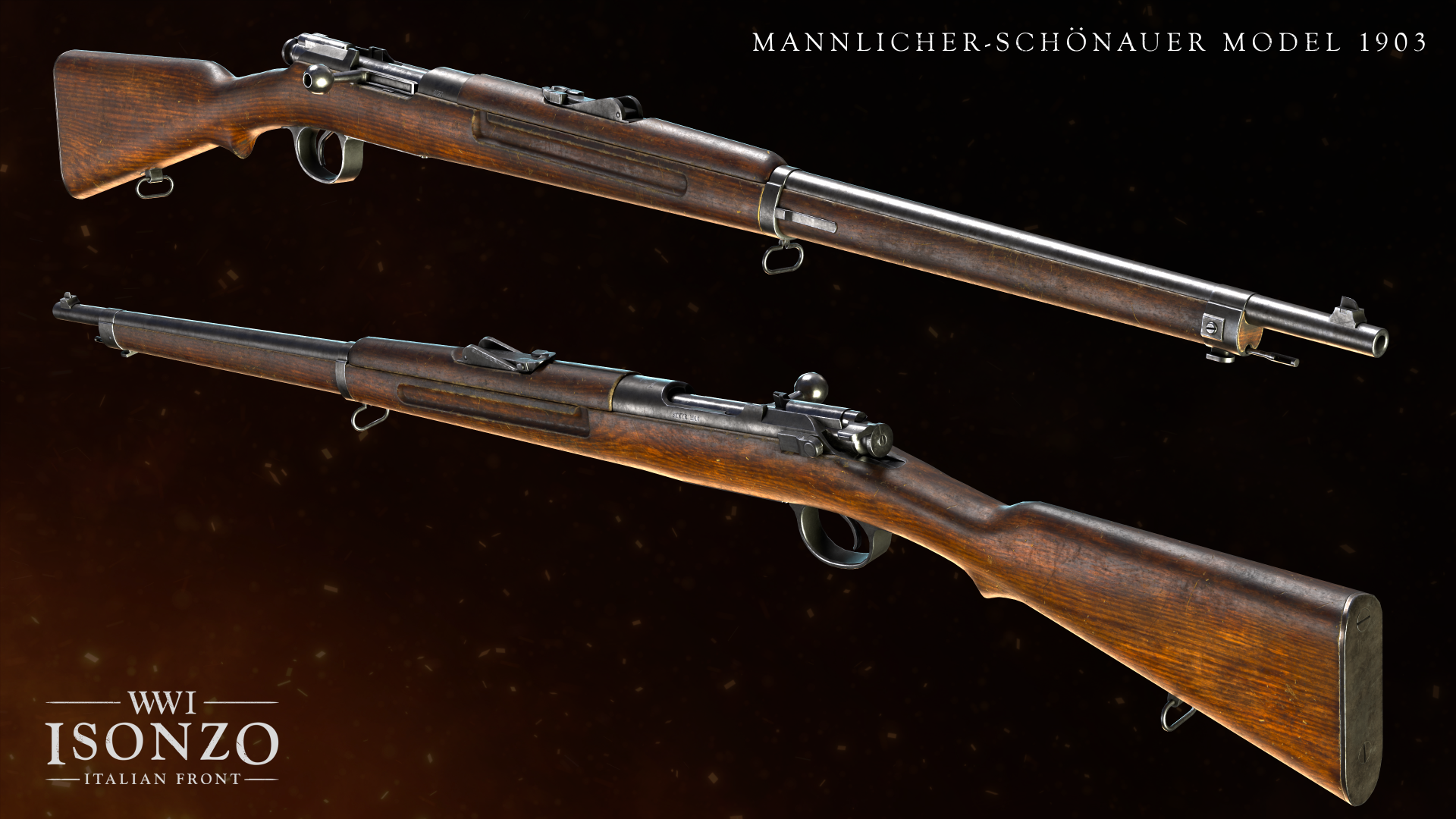
A conventional looking rifle hiding an unusual magazine…
It was a very well made and reliable weapon, but that made it expensive to produce. The 6.5mm cartridges were an unusual choice which may also have made it less appealing. Nonetheless, production went ahead for the Greeks, with more than 100,000 supplied before 1914 - rifles ordered afterwards were diverted to the Austro-Hungarian armed forces.
The Mannlicher–Schönauer had one other interesting feature - a rotating spool magazine. This part was designed by Schönauer, hence the name of the rifle. While the rifle was fed by stripper clips, inside was a rotating system, as you can see in the diagram below. While uncommon, rotating spool magazines are still in use with some weapons today!
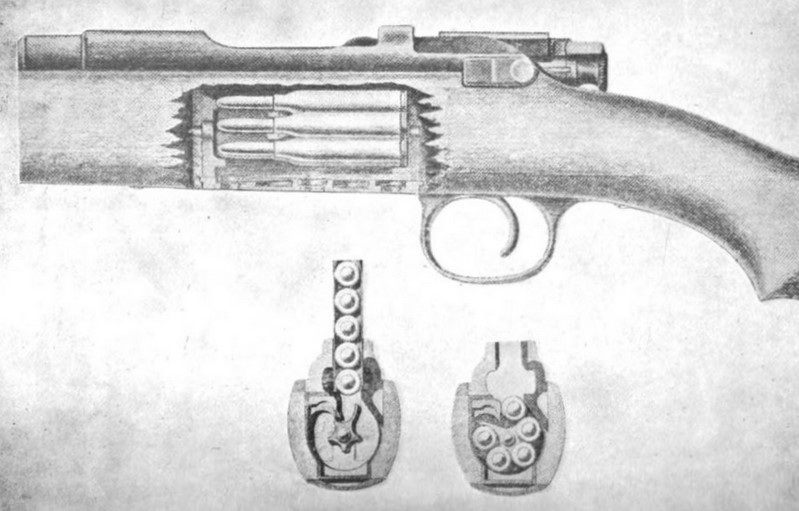
Diagram showing the rotating spool magazine.
Steyr-Mannlicher M95 with C.Reichert Scope
This is the standard issue Austro-Hungarian rifle fitted with Viennese made optics by C. Reichert - a company who also made microscopes.
The Steyr-Mannlicher M95 was a very effective rifle with an unusual straight-pull bolt action, meaning the user would pull it back then push it straight forward again, saving two motions compared to more typical bolt actions where the user had to go up-back-forward-down. This gave the M95 a very solid 20-25 rounds per minute rate of fire. Austro-Hungarian soldiers nicknamed it the ‘Ruck-Zuck’ rifle (meaning ‘back and forth’ rifle).

M95 with scope.
M1867 Werndl–Holub
The Werndl is a reserve rifle - a perfectly serviceable single-shot breechloader… but no match for the fire rate of modern guns. As such they were never intended for use by frontline troops.
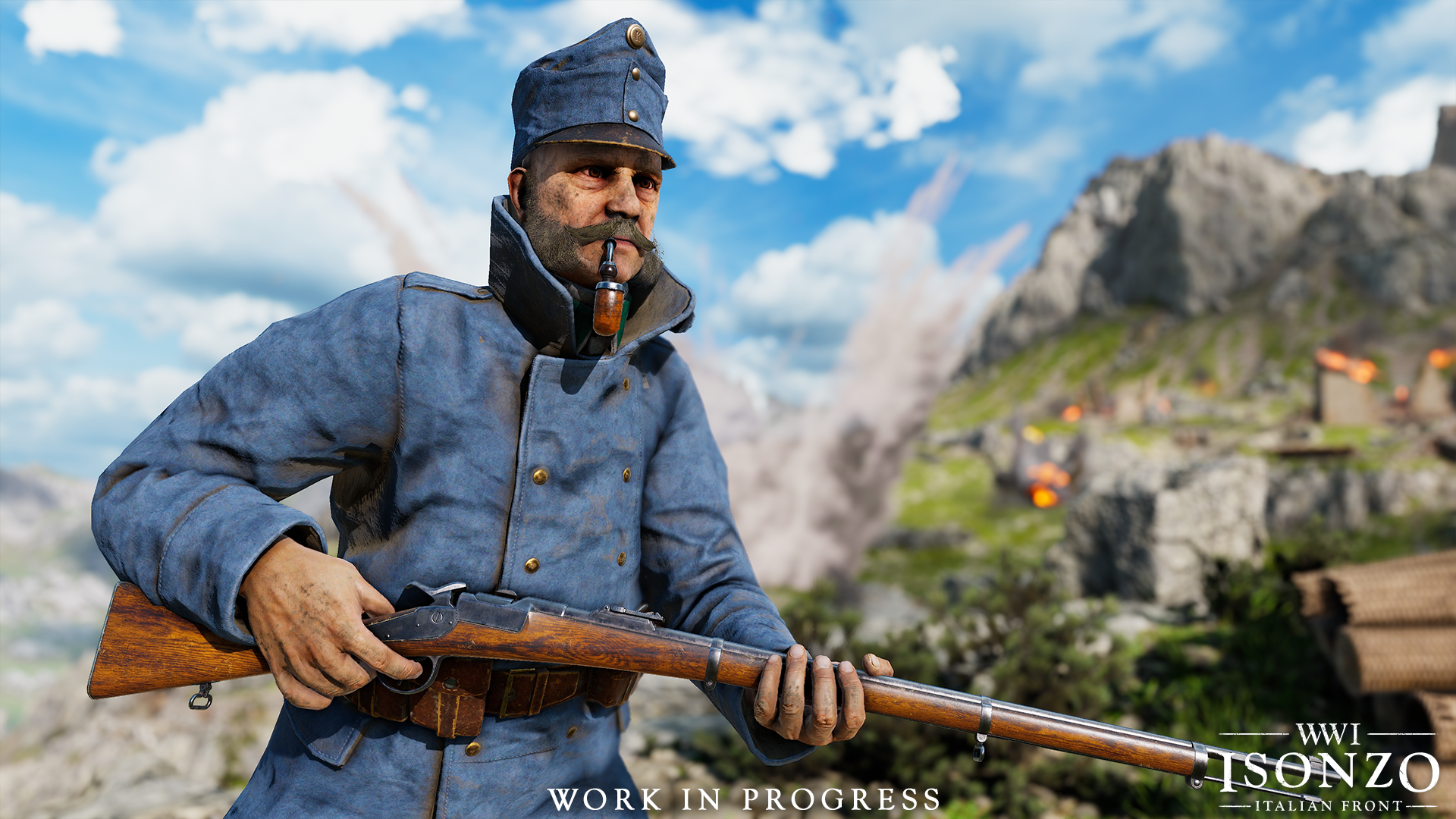
The reliable but elderly Werndl, in elderly but reliable hands.
They were issued to some rear-echelon forces so that more modern weapons could be concentrated where combat was expected. As with the Italian soldiers issued old Vetterli rifles, the troops given the Werndl did sometimes find themselves in combat with their decades old firearms. If you can make every bullet count and avoid chaotic situations where you need more than one shot at a time, the Werndl can be a very satisfying weapon to master.
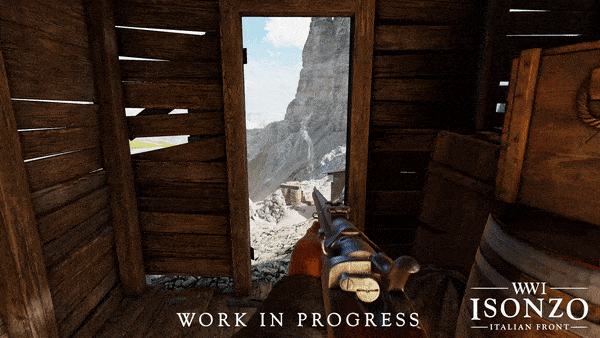
Reloading the Werndl.
Revolvers and Pistols
Handguns are much lighter than rifles and often offer quicker reaction times in close combat situations, but in turn have shorter ranges and less stopping power. However, during WW1 handguns often had as many (or even more) shots available before needing to reload than rifles did. Some classes (like Officers) can carry handguns as a primary weapon, while others can take them as a sidearm to complement a rifle.
Rast & Gasser Model 1898
The Rast & Gasser Model 1898 was an Austro-Hungarian service revolver, produced by an Austrian firm based in Vienna. It was a well made and reliable firearm, but some of the design choices were already outdated when the gun was first put into production.
180,000 of these were built from 1898 to 1912, and by the time of WW1 they were in the process of being replaced with semi-automatic pistols - Steyr M1912s for the infantry and Roth–Steyr M1907s for the cavalry. But since production of these newer weapons wasn’t sufficient to fully equip the Austro-Hungarian armed forces, the Rast & Gasser 1898 would remain in use throughout the war.
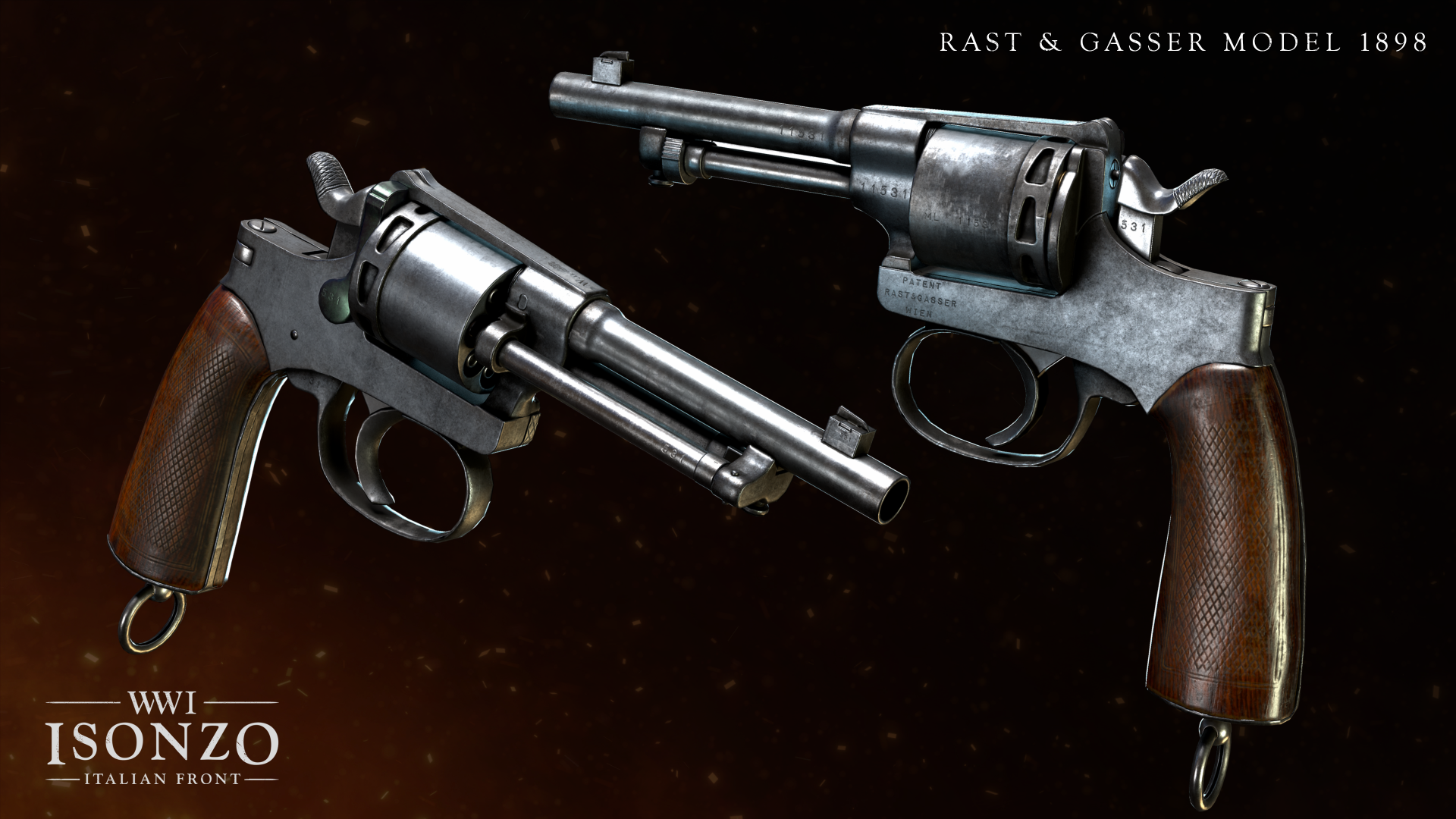
One of the big drawbacks you’ll experience in-game is the loading-gate through which individual cartridges are loaded, and extracted individually by an extractor rod. This means rather than being able to empty all spent cartridges at once, you have to open the cylinder, use the rod to expel one round and put in a new one, rotate the cylinder, then repeat that process. Eight times! Use your shots carefully with this one, because you really don’t want to have to reload when you’re in the thick of the action! On the flip side, eight shots before needing to reload is better than any rifle in the game offers…
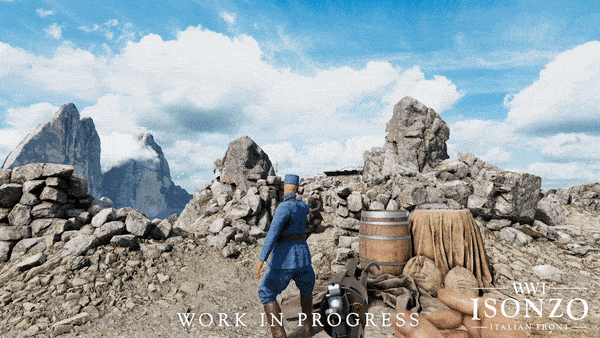
The Rast & Gasser in action!
Roth-Steyr Model 1907
The Steyr Mannlicher AG is a 157 year old Austrian arms company, which was at the forefront of auto-loading pistol technology in the early 20th century. The Austro-Hungarian military made use of several Steyr firearms, including the two we’re going to look at today: the Roth-Steyr Model 1907, and the Steyr-Hahn 1912. The Roth-Steyr was the first semi-auto pistol adopted by the land army of a major power: it was issued to the Austro-Hungarian cavalry. Because of this, it has a heavy trigger pull to prevent accidental discharge - you don’t want a hair trigger on a pistol to be used by mounted cavalry!
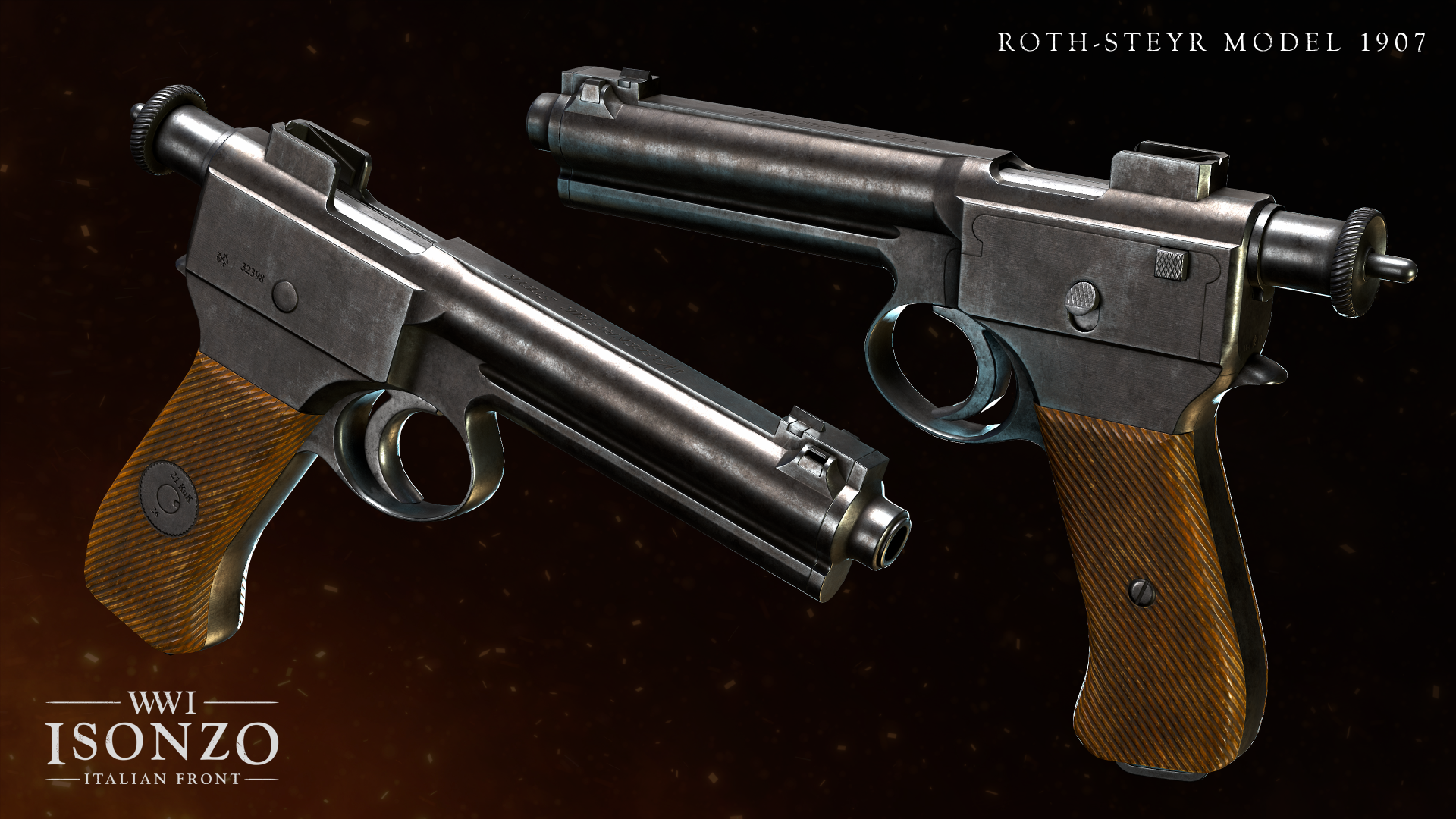
Steyr-Hahn 1912
The Steyr-Hahn is based on the mechanism used by the Roth-Steyr. It was initially issued to the Austrian Landwehr (remember that Austria-Hungary had effectively three armies - the Austrian Landwehr, the Hungarian Honvéd and the Common Army - with the Austrian and Hungarian armies generally being better equipped than the Common Army).
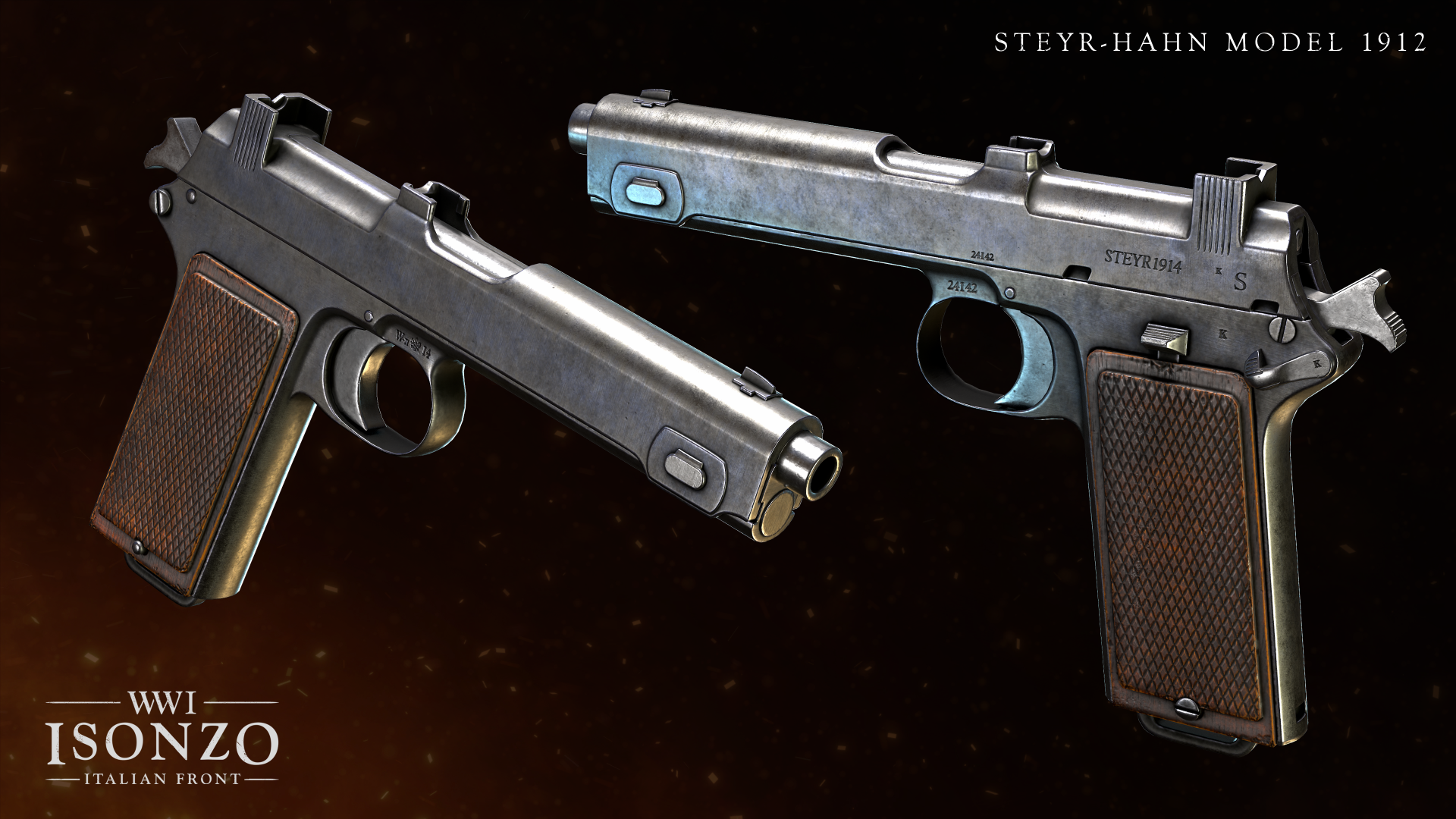
The Steyr-Hahn was a popular enough weapon that Germany would place orders for 10,000 during WW1, and years later the Wehrmacht would order 60,000 after annexing Austria in 1938. Incidentally, these aren’t the only weapons manufactured by Steyr Mannlicher AG that feature in Isonzo.
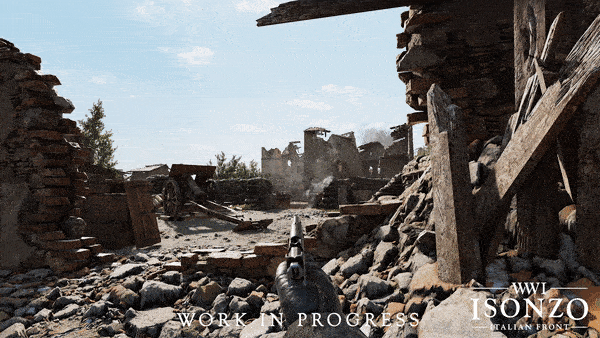
Reloading the Steyr-Han stripper clip.
Equipment and Heavy Weapons
We don’t just model specific weapons for each faction - different armies made use of different supporting gear as well, including things like canteens and binoculars. While they function the same in-game - no need to worry about imbalance in canteen drinking speed ;) - we wanted to get these details right and remind people of the diversity in equipment used.
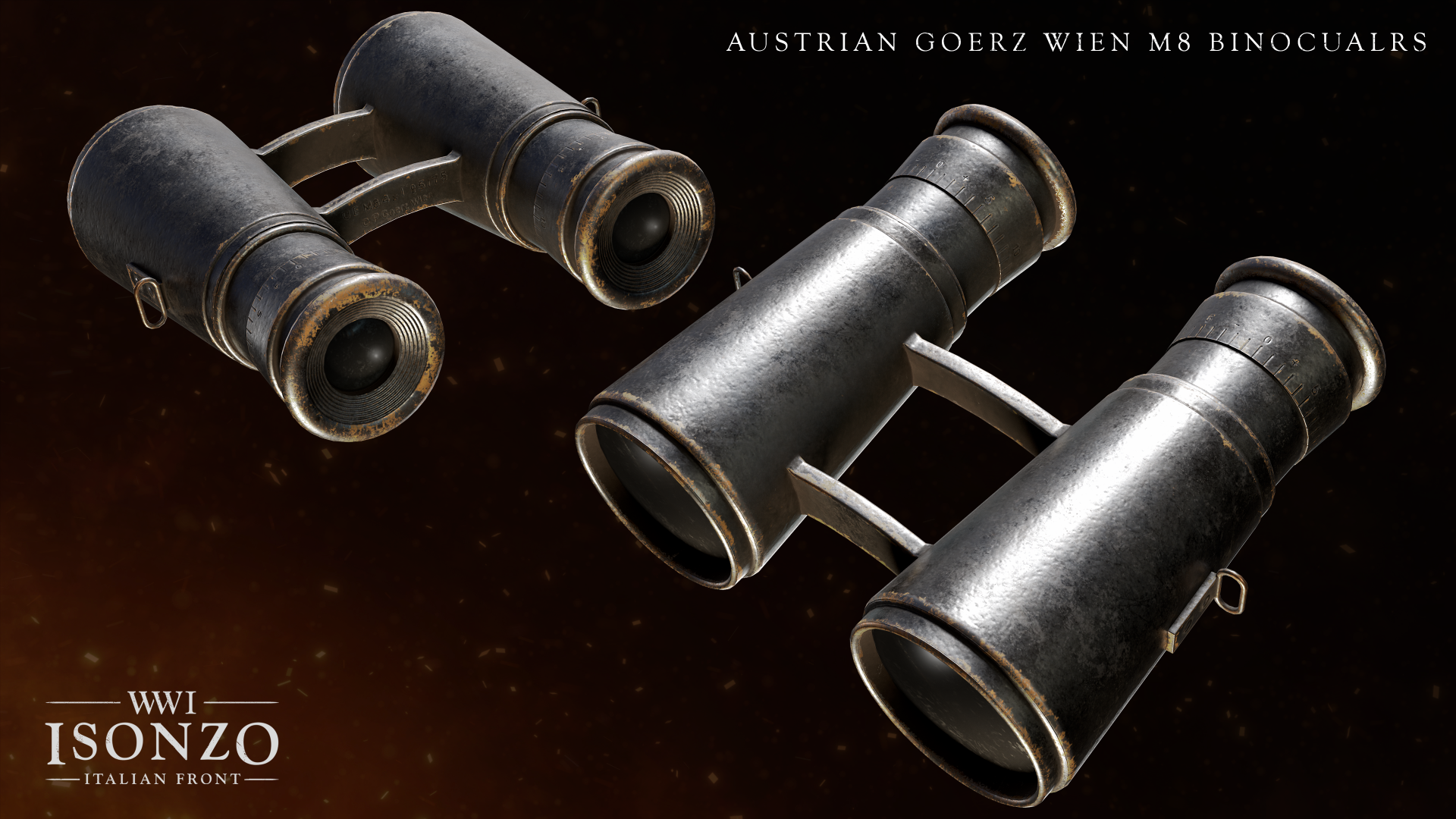
This particular pair of binoculars was made by the German CP Goerz company, a leading manufacturer of military optics. In 1908 they opened a branch in the Hungarian city of Pozsony, which is where the Goerz Wien M8 binoculars would have been produced. The M8 is a reference to the year this model was introduced.
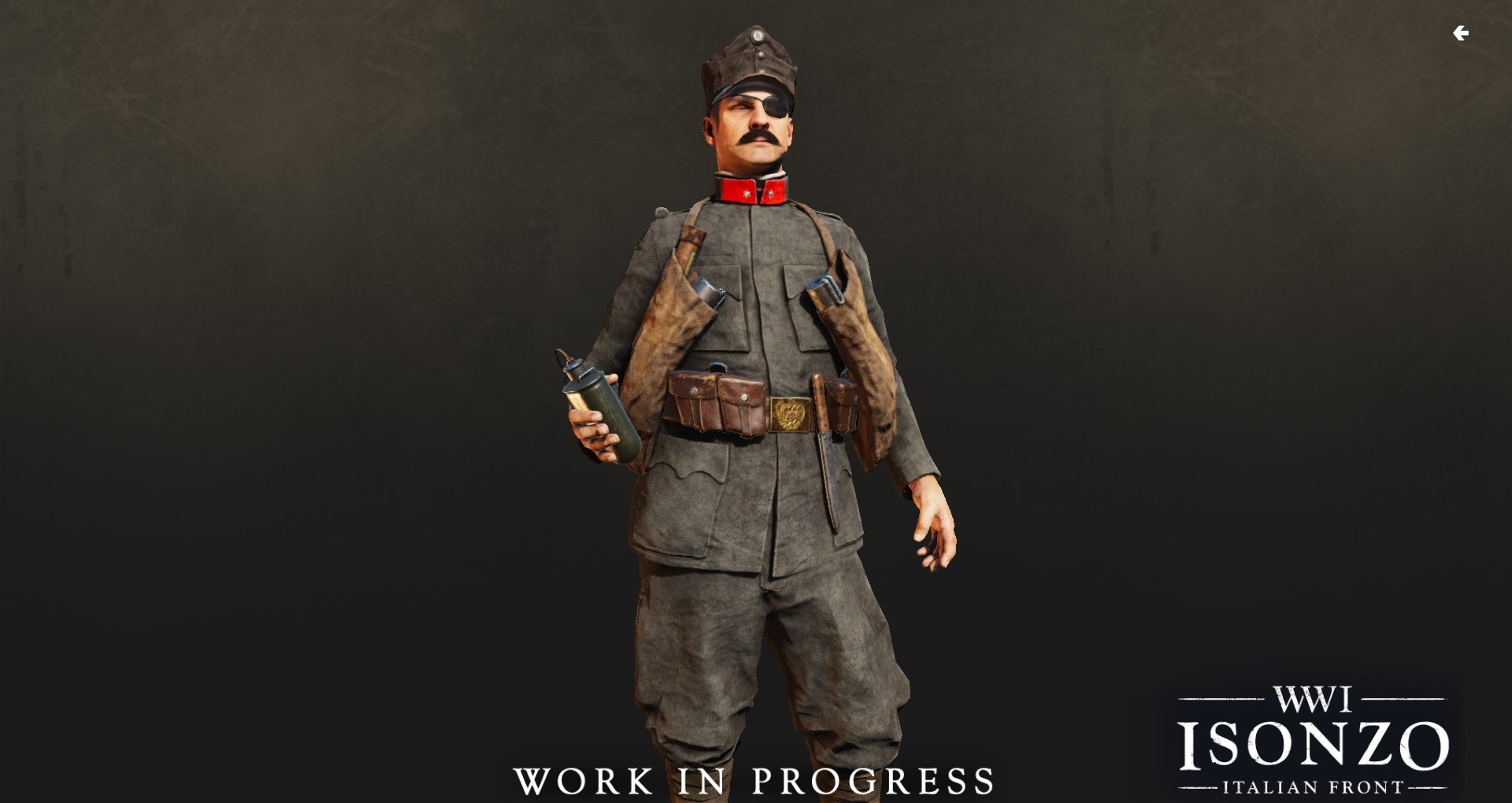
An Austro-Hungarian soldier in the barracks with the M.14 Canteen ‘Werke 1914’.
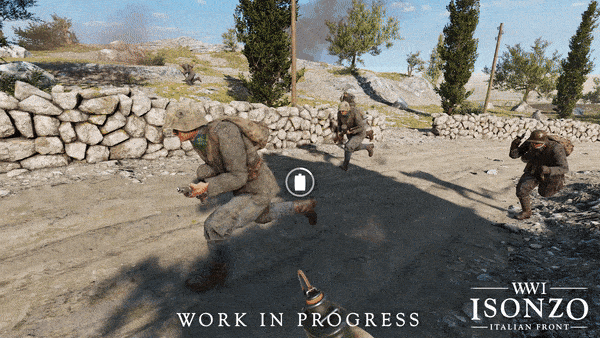
Drinking from the flask going into an assault.
Minenwerfer M14
The 9 cm Minenwerfer M14 is the mortar used by Austro-Hungarian forces in Isonzo. The M14 is loaded from the back, allowing you the opportunity to keep your eyes on the field in front of you. Designed under time pressure by an army committee, it was intended to serve as a much needed light mortar (in contrast to heavier mortars, which in Isonzo are represented by the Officer call-ins).
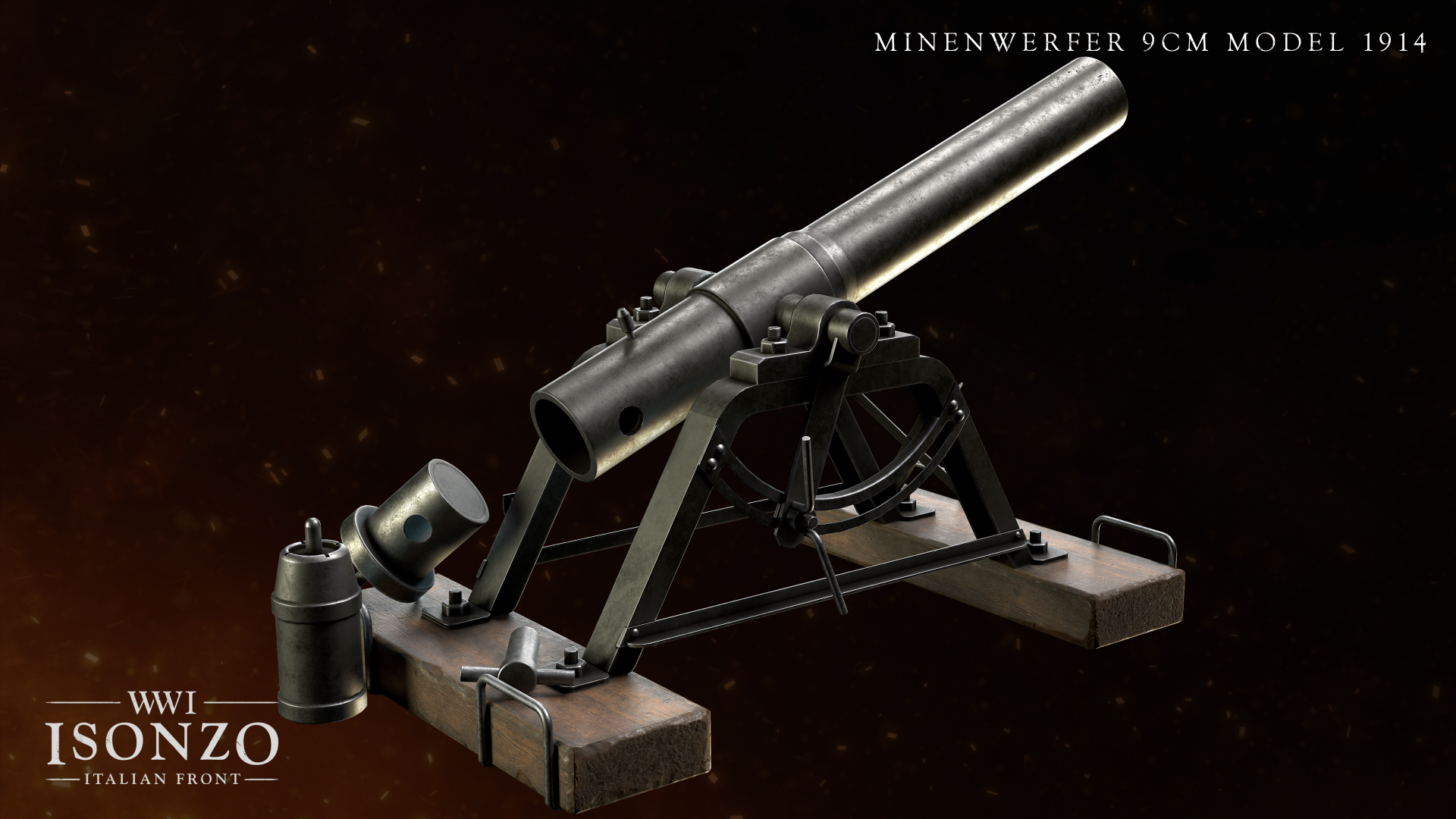
While it did that job, there were flaws: it was awkward to rotate for aiming, a black powder propellant that could be very smoky, and bomb fuzes that were unreliable and could lead to duds. Many of these problems were fixed in later versions of the mortar, but ultimately it was decided to purchase and use German made mortars from 1917 onwards.

M14 mortar firing.
As always, don’t forget that you can wishlist Isonzo if you didn’t already. We’re looking forward to everyone trying out these weapons when Isonzo releases on September 13th!





